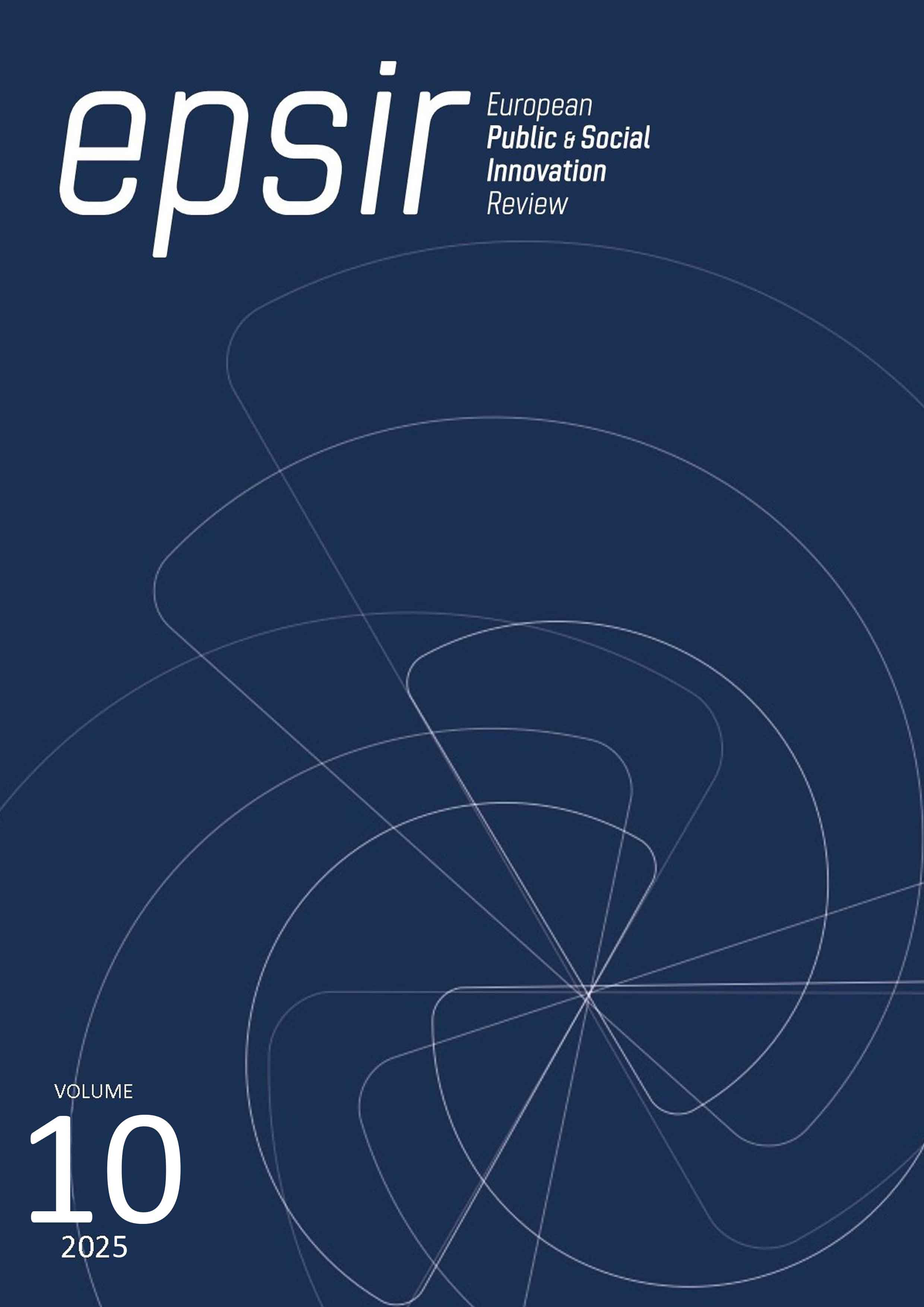Dialogic communication in the execution of group techniques in the English language
DOI:
https://doi.org/10.31637/epsir-2025-1953Keywords:
communication, dialogic, strategies, education, learning, axiology, interpersonal, pedagogyAbstract
Introduction: Dialogic communication fulfils the sense of relief in the development of learning of the child during his training process, allows to achieve an adequate interaction in its environment, through the expression of ideas to develop collaborative and comprehensive contexts. Methodology: It addresses a positivist paradigmatic position, with a quantitative approach, The study was conducted in a field study and a sample of 100 students, who were surveyed to learn about the strategies teachers use for teaching English. Results: It was possible to diagnose that there is no good communication for the execution of group techniques used by teachers, since the identification of the problem situation, for this purpose, a pre-test and posttest were applied, the second to generate an active, communicative, open and flexible model. Discussion: The strategy of participatory dialogue allows the student to freely express ideas and propose alternatives for solving a problem, and The European Commission has recently published a study on the impact of the EU’s policies on the labour market. Conclusions: Four strategies were designed that promoted dialogic communication in the execution of group techniques, The data on academic performance shows the effectiveness of these strategies.
Downloads
References
Carretero, M. (2020). Epistentiality, manner and dialogic contraction: The case of English clearly and Spanish claramente. Journal of Pragmatics, 169, 6-9. doi:10.1016/j.pragma.2020.07.007 DOI: https://doi.org/10.1016/j.pragma.2020.07.007
Chandrasena, R. M. (2019). Dialogic paradigm in teaching and assessing english for specific purposes (Esp) in higher education. IUP Journal of English Studies, 14, 483-97.
Coll, C. (2014). Desarrollo, aprendizaje y enseñanza en la educación secundaria. Esapña: Ministerio de Educación y Formación Profesional de España. Obtenido de https://elibro.net/es/lc/utiec/titulos/49224
Escarpanter, J. (2010). La comunicación oral. En J. Escarpanter, La comunicación (págs. 34-36). Firmas Press. Obtenido de https://elibro.net/es/lc/utiec/titulos/36451
Fantin, R. (2020). La comunicación nuclear: un aporte a la teoría del diálogo:. Austria: Editorial Biblos. .
Flores, M. J. (2019). doi:http://dx.doi.org/10.36097/rsan.v1i35.957 DOI: https://doi.org/10.36097/rsan.v1i35.957
García, P. M. (2018). Learner identity in EFL: An analysis of digital texts of identity in higher education. Digital Education Review, 33, 7-9.
Innes, B. S. (2017). Dialogic Communication in Collaborative Problem Solving Groups. Current Issues in Middle Level Education, 4-8.
Jiajia, L. (2023). A critical examination of the interaction between translanguaging pedagogy and students’ beliefs and practices of translanguaging in learning EAP. Source type, 2-3.
Lorne, A. M. (2018). Short communication on the missing dialogic aspect of an automated writing evaluation system in written feedback research. Journal of Second Language Writing, 41, 5-7. doi:10.1016/j.jslw.2018.05.004 DOI: https://doi.org/10.1016/j.jslw.2018.05.004
Luk, J. C. (2017). Classroom Interactions as Cross-Cultural Encounters: Native Speakers in EFL Lessons. Language, Culture and Curriculum,, 5-8. doi:10.4324/9781315095646 DOI: https://doi.org/10.4324/9781315095646
Mona, A. (2021). Emphatic Sentences: A Comparative-Translational Study of Formal-Functional Relations in English and Romanian. Source type, 3-6. doi:10.51391/TRVA.2021.04.10.
Morin, E. (2002). Repensar la reforma (págs. 23-28). Buenos Aires, Argentina: Nueva visión.
Pérez, G. Z. (2005). La adquisición del lenguaje" de Serra, Miguel, Elisabet Serrat, Rosa Solé, Aurora Bel y Melina Aparici. Caracas, Venezuela: Red Revista Boletín de Lingüística. Obtenido de https://elibro.net/es/lc/utiec/titulos/93808
Reongrudee, M. (2024). An Exploratory Study of Reflective Dialogue Journal Writing of EFL Graduate Students in the English as a Foreign Language Context. Source type, 3-5. doi:10.61508/refl.v30i1.264474 DOI: https://doi.org/10.61508/refl.v30i1.264474
Santos, B. d. (20 de mayo de 2019). Latinoamérica. Revista de estudios Latinoamericano. Obtenido de https://www.scielo.org.mx/scielo.php?script=sci_arttext&pid=S1665-85742021000200215
Torres, D. S., & Espinoza, R. y. (s.f.).
Wan, D. I. (2022). A comprehensive study of the role of cloud computing on the information technology infrastructure library (ITIL) processes. Library Hi Tech, 40. doi:10.1108/LHT-01-2021-0031 DOI: https://doi.org/10.1108/LHT-01-2021-0031
Wilton, A. J. (2020). We have a grandios saison gespielt" - English as a lingua franca in media sports interviews. Journal of English as a Lingua Franca, 9, 6-9. doi:10.1515/jelf-2020-2032 DOI: https://doi.org/10.1515/jelf-2020-2032
Zubiri, E. H. (2020). Inclusivity, participation and collaboration: Learning in interactive groups. Educational Research, 62, 8-10. doi:10.1080/00131881.2020.1755605 DOI: https://doi.org/10.1080/00131881.2020.1755605
Downloads
Published
How to Cite
Issue
Section
License
Copyright (c) 2025 Eulalia Beatriz Becerra García, José Clemente Mora Rosales

This work is licensed under a Creative Commons Attribution-NonCommercial-NoDerivatives 4.0 International License.
Authors who publish with this journal agree to the following terms:- Authors retain copyright and grant the journal right of first publication with the work simultaneously licensed under Creative Commons Non Commercial, No Derivatives Attribution 4.0. International (CC BY-NC-ND 4.0.), that allows others to share the work with an acknowledgement of the work's authorship and initial publication in this journal.
- Authors are able to enter into separate, additional contractual arrangements for the non-exclusive distribution of the journal's published version of the work (e.g., post it to an institutional repository or publish it in a book), with an acknowledgement of its initial publication in this journal.
- Authors are permitted and encouraged to post their work online (e.g., in institutional repositories or on their website) prior to and during the submission process, as it can lead to productive exchanges, as well as earlier and greater citation of published work (See The Effect of Open Access).



